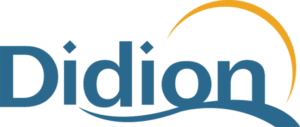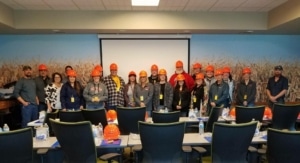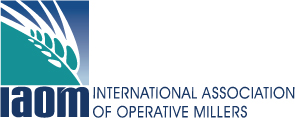 Objective: Enhance the public image of milling companies while forming a talent pipeline. Develop a successful job-shadowing program that effectively showcases educational opportunities.
Objective: Enhance the public image of milling companies while forming a talent pipeline. Develop a successful job-shadowing program that effectively showcases educational opportunities.
This is achieved through ongoing campaign of tours and job-shadow experiences, paired with an effort to lobby local leaders and institutions of higher learning.
Before the company could successfully bring students into their facilities to experience job-shadowing, they participated in their local Career Coalition – schools, city administration, corporate leaders, NGOs. This effort serves to dispel narratives about the character and nature of the jobs available (wage, promotion potential, skills level). Participating in community meetings provides a platform to represent corporate values and encourage dialog about the opportunities the company is able to provide (and the challenges they face).
Before students make their way through the job-shadowing experience it was necessary to take local teachers through the mill during their in-service day so they can see the level of technology, math, science, etc., utilized in a mill. The teachers, in turn, will become ambassadors for the program and accurately represent the opportunities available to their students.

Teachers will have a similar experience to that of their students – learn about career opportunities, milling process, etc. Reassurances concerning student safety, engagement and other risks are at the forefront of this effort (e.g. PPE is worn, tour areas are accommodating, parts of the mill are off limits).
Job Shadow Program Features and Lessons Learned:
- Recruit company team members to lead the tours, putting an emphasis on team member who are likely to provide a good job shadow experience
- Prep team members with list of questions to engage students
- Controls in place to ensure safety of students. (wear PPE, be with employee at all times, certain places in facility are off-limits).
- Job Shadow – 100 students from local high schools come in; assigned to team member (3 students per employee), shadow person throughout the 3-hour tour. Students rotate through different roles and can see different job functions.
- Students are representative of the general middle and high school student body.
- Start the day with a group discussion
- What do you think of the mill/facility when you drive by? (Expectation: negative associations)
- After 3-hour job shadow, ask the same questions…what words come to mind?
- Fun people, computers, technology, exciting, big trucks and equipment
- Recruited team members to be job shadow hosts – each had 3 students
- Human Development team prepared a guide for job shadow host to help with conversation with students. Talking points – tell them what the day in the life of your position is like. What’s a “really good day”? What do you like most about your coworkers? What are the best parts of your jobs? Be prepared for lots of questions from the young adults who are seeing this environment for the first time.
- Incentive provided for the schools: paid for the bussing and light refreshments including some of the products that mill ingredients are in. Showcasing the products offers a good brand representation and is visually stunning.
- How do you access the parents and work towards shaping their perception of the job / career? Students spent time creating videos about their experiences which could be shared with their parents and provide an illustration of what the career path offers.
Post-Tour Activity
What’s cool about milling? (contest)
As the students are on their job shadow tour, they video the processes they see, and enter their video into a contest. Shared on an official platform, parents, teachers and friends have the opportunity to review the videos and vote on the “best.” This helps create the feeling of “milling is cool” and reaches across the student / parent relationship. It creates buzz about milling and shapes the parents perception of the opportunities at the company.
Conclusions
- Career Coalition – community forums such as these offer the chance to represent the vocation to the larger community, shape perception of the industry, and create interest in stakeholder groups.
- Regular attendance at these forums reinforces the identity of the company as a pillar of the community, which is concerned with investing in the future, corporate stewardship, and sustaining the local way of life.
- Showcases a desire to invest in the lives and careers of young people.
- Establishes the company as a good community partner.
- It can take more than an invitation to create a successful job shadowing program
- Achieving a critical mass of prospective students require significant outreach and investment
Highlights of lessons learned in developing the process
It is imperative to create a conversation around an issue with many different stakeholders. Shaping the perception of a company or employer is a lengthy process. For example, there was a measurable sentiment that the mill paid poorly. It’s important to take these comments as an opportunity to learn how people draw these conclusions. While comments may or may not be factually accurate, unless you make yourself available to shape the conversation and provide context, the perceptions can endure.
It is possible to combat these perceptions with different tactics:
- Favorably comparing the work to engineering
- Accurately depicting the career ladder
- Emphasizing improvements to the job design
- Detailing the training and education necessary to succeed at the role
- Depicting different opportunities within the corporate structure
- Narrate how successful employees add value to their role and are given recognition
Promoting education is part of this project and it is crucial to building a talent pipeline. Engaging with the community (e.g. Career Coalition), local leaders, stakeholders and intuitions, is necessary reach the level of investment necessary to successfully recruit the future workforce.
How do we recruit students to K-State? How do we take Wisconsin students and get them to get a milling degree out of state and come back to Wisconsin. Getting stakeholders to work together can harmonize this approach and increase investment.
In order to compete with other opportunities in our region, now we’re working on scholarship program – the Mill will pay some portion of the tuition. This has these features:
- focus on the desire parents and students have to spend time back home in Wisconsin during academic breaks.
- promote the ability to host interns locally, while they complete their studies in Kansas.
- paint a realistic portrait of what success at K-State will translate into post-graduation.
Scholarship context:
Academic scholarships are often a small portion of the cost of attendance (e.g. $500 to $1000).
There is a growing consensus among families that incurring debt for college attendance must be balanced with a personal ROI.
Companies can show their willingness to invest in their region by supporting students in post-secondary education.
For families that need assistance, it’s necessary to compete with the allure of the GI Bill and scholarships offers for other in-demand degree programs.
Core Values
- Humble
- Hungry
- Team
- Safe

